
Having grown up and lived in front of the workshop at 7 Gravina Street in Madrid, I have the privilege of being able to say, “I grew my teeth between guitars”.
I recall the school handcraft projects and then addressing questions to my father, Mariano, and my uncle, Faustino, about the ‘how’ and ‘why’ of different tools.
Observations and many more questions followed. I was deeply curious to know how a guitar was constructed from the moment the raw material – the tree – fell to the ground, creating the more-than-passionate ancient language of the guitar.
Little by little, I got to know the different woods and learned how to use rasps, files, chisels, brushes, hand planes, and all of the artisan tools of the workshop.
I came to understand how wood is cut and dried, I learned to distinguish the classifications and the qualities, and how to use templates and markers, rulers and measuring tools. I grasped the different ways of assembling a guitar and constructing the various pieces and parts of the instrument. Then, there was an exhaustive familiarisation with glues and finishing materials, resulting in the first guitar built entirely by my hands finally seeing the light of day in 1976, following years of learning to play and enjoyment in learning.
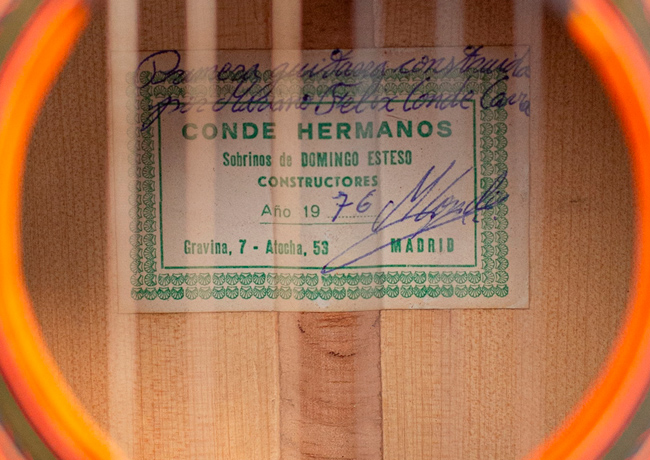
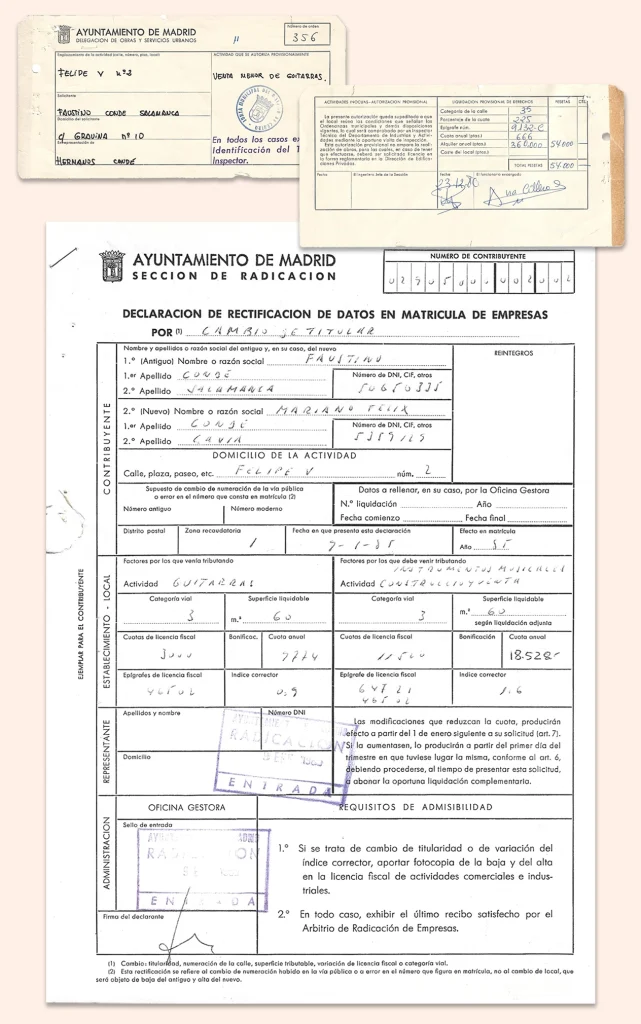
On December 23, 1980, I collected the license from Madrid City Hall for the new family workshop at 2 Felipe V Street to open its doors.
The applicant for the license was my uncle, Faustino.
My father, Mariano, relocated here while I was straddling between this new workshop and the premises at 7 Gravina Street.
During the first years at No. 2 Felipe V Street, the guitars I built with my father still carried the label of 7 Gravina Street, which continued as the parent company.
In 1983, upon my father’s retirement, it was his and my uncle’s decision that I should take charge of the business, even though I was the youngest of their sons. This broke the family tradition of passing a business to the oldest male offspring.
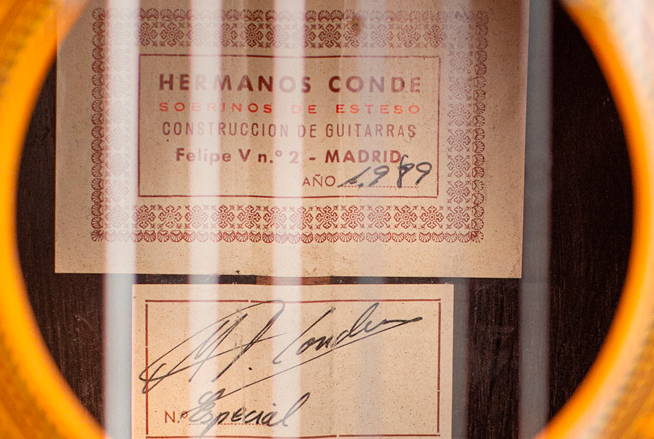
By 1984, a few guitars already carried the label of the workshop at 2 Felipe V Street. By 1985, the guitars were built by me and signed by my father, who I considered should be the signatory due to his status as my teacher, despite his deteriorating health which prevented him from working.
In 1986, I decided to establish the Conde Hermanos business brand with its intellectual property rights, which was formalised in December of that year and into which I voluntarily incorporated my brother.
It was my own decision to allow four or five additional guitar labels to carry the two signatures of my brother and me.
As well as labels for special edition guitars, the images below show a few other labels from my private collection from those years.
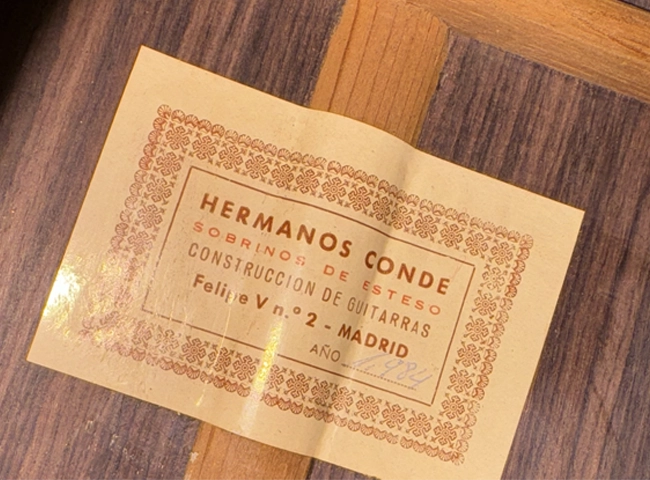
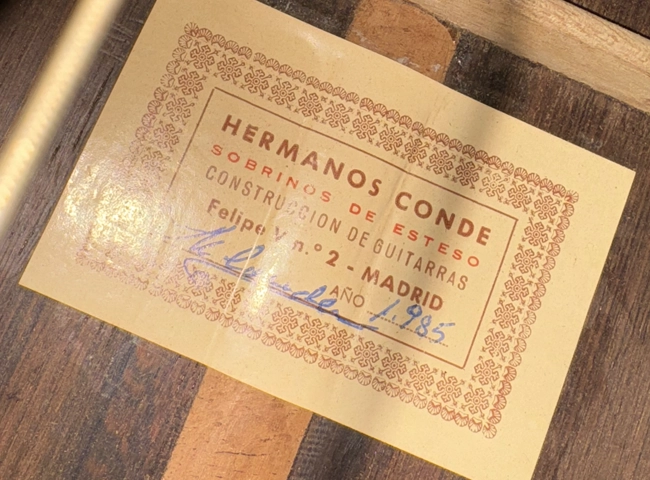
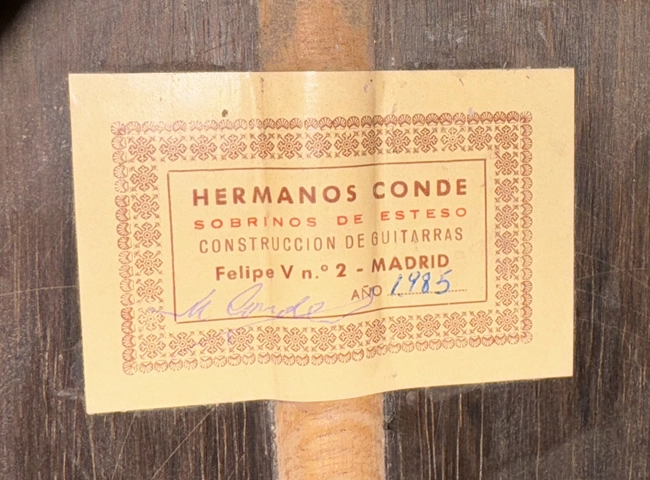
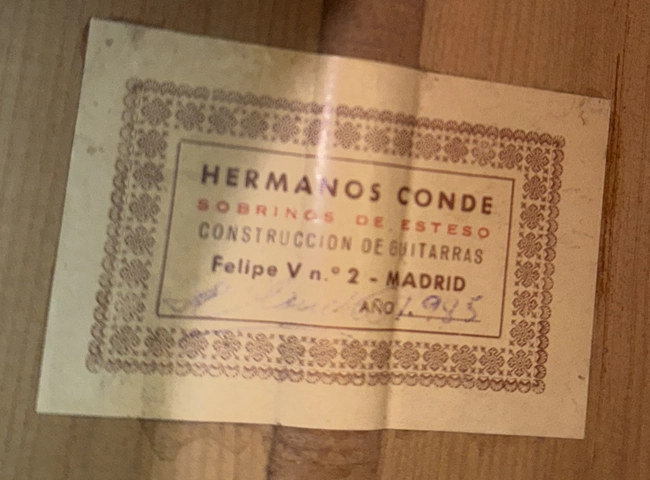

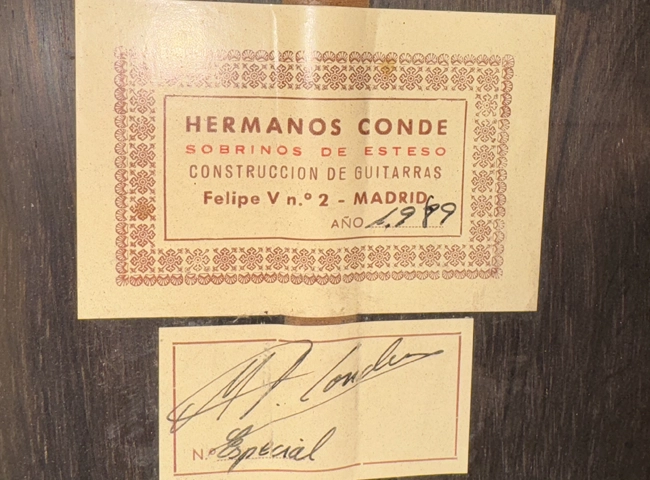
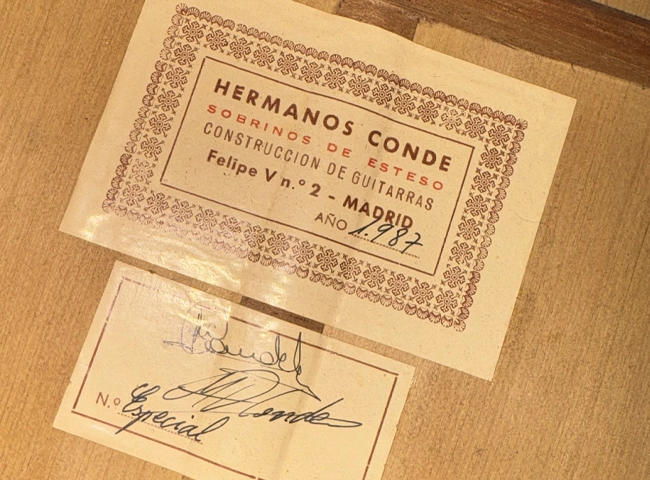
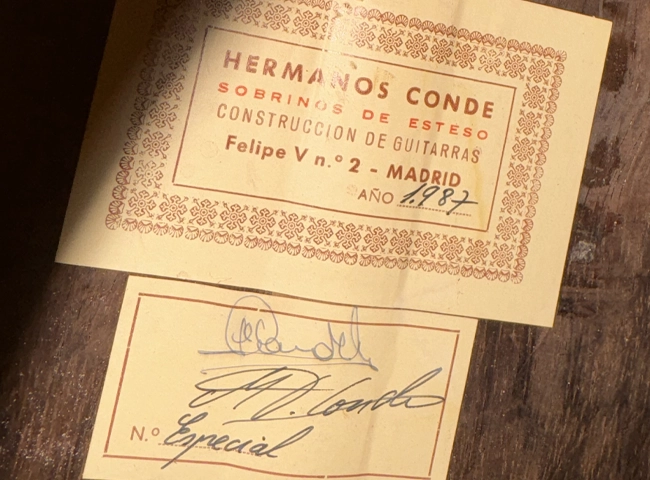
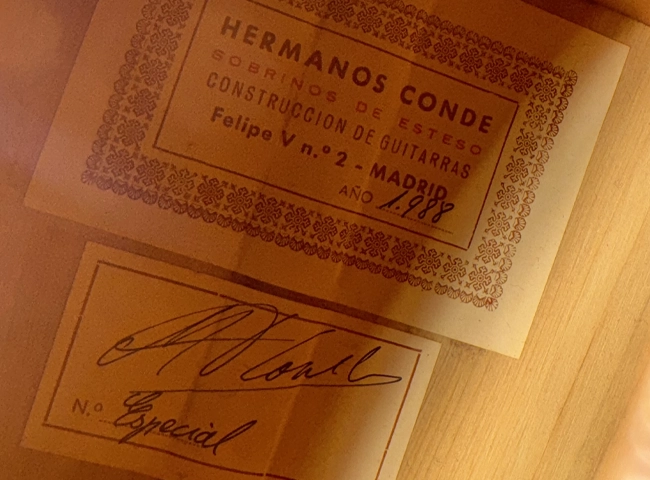
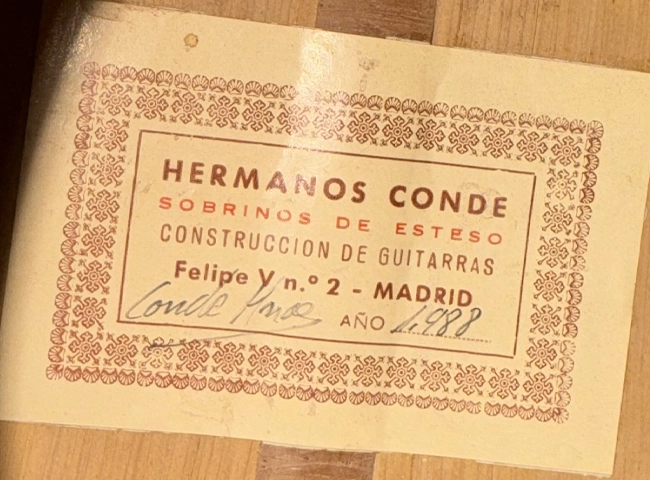
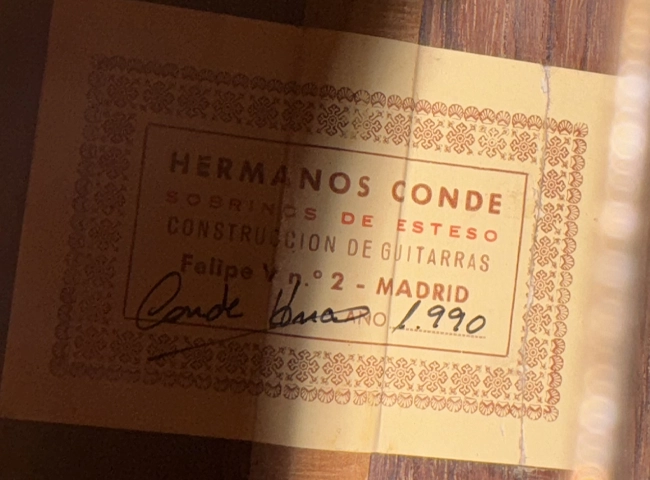
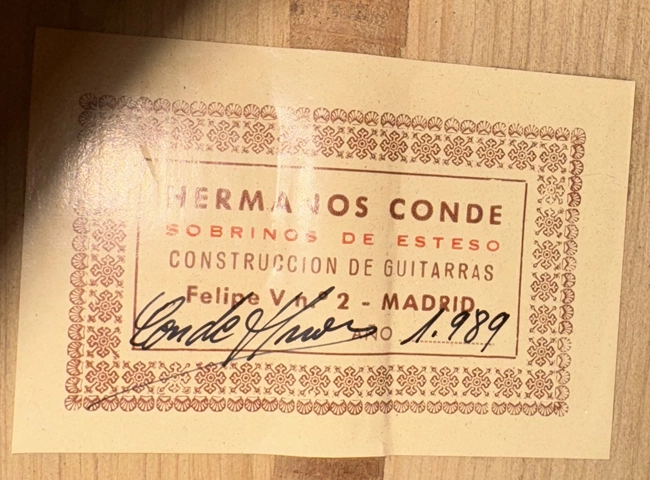

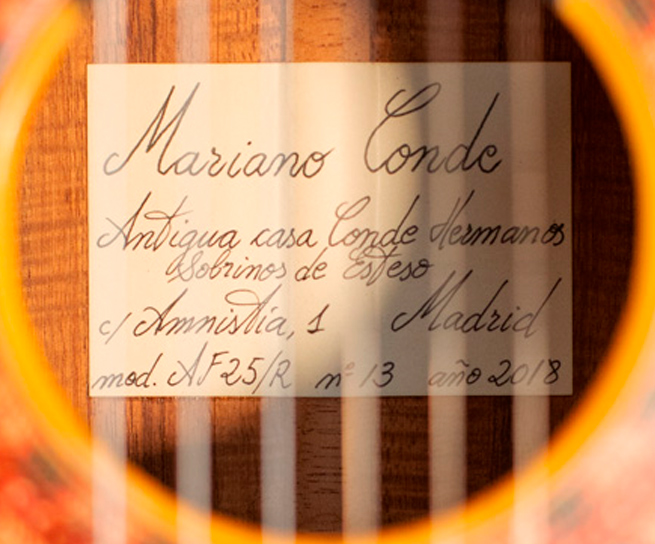
The company named Conde Hermanos C.B. remained operational until a partnership dissolution agreement was drawn up in 2009 and ratified on April 30, 2010.
After the dissolution of Conde Hermanos C.B., I settled into new premises at 1 Amnistia Street, Madrid, with my son Mariano and former employees of the defunct company.
Initially, the guitars for sale at Amnistia Street represented the stock transferred from the closure of the premises at Felipe V Street. These carried the corresponding Felipe V label but with an Amnistia Street stamp spanning the label and the wooden back of the instruments.
From the outset, the labels on all Mariano Conde guitars were made and written by hand, indicating the brand name, address, model name, serial number, and year of completion.

In this workshop, the Poem Guitars were developed, and each began to be inscribed with the initials ‘MC’, at first with an indelible marker and then with fire branding on the top.
The reason for the ‘MC” branding was very simple: there was no room for error regarding the authorship of the guitar since my family was already using the ‘half-moon’ headstock, which no longer satisfactorily identified its origin and provenance.
Furthermore, the branding gave the luthier a more prominent role in the instrument by ‘coming out’ from within the guitar; transferring the identity from the internal label to the top was to share the stage with the guitarist, blending its provenance between his hands.
These concepts and their rationales are registered as “Initials” in the Intellectual Property Register of Madrid.
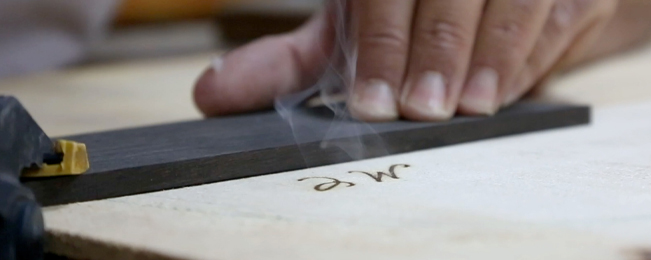

Soon after, I was pleased to see other guitar makers approving the concept and adopting the same idea, marking their own instruments with initials, and even going as far as adding their full names.
Someone had to take the first step, and I am content with being recognised for that: the first to dare to break with tradition and old guitar-making conventions. These ideas had supporters and detractors from the outset, but today, it remains clear that ‘MC’ represents ‘Mariano Conde’.
Since 2018, Mariano Conde, father and son, have been working together to build guitars without the help of any internal or external contractors. Our roots remain deep; they are anchored in the oldest guitar school in Madrid. Yet the isolated and constant work once conducted at Gravina Street, along with a temporal evolution that brought us to the present, has resulted in a metamorphosis and a unique identity that my son and I proudly carry as the only true successors of such venerable luthier origins. We produce the authentic crescent-shaped ‘half-moon’ guitars in the ancient Esteso-Conde tradition.
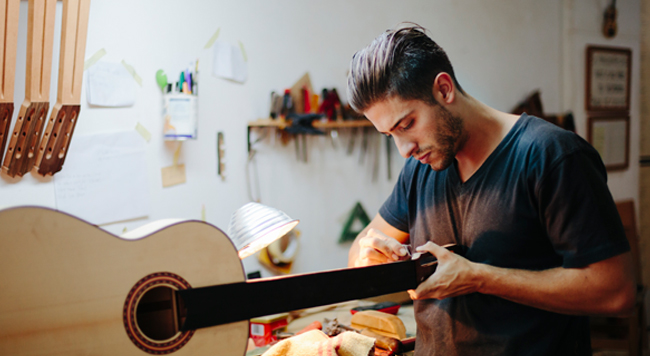
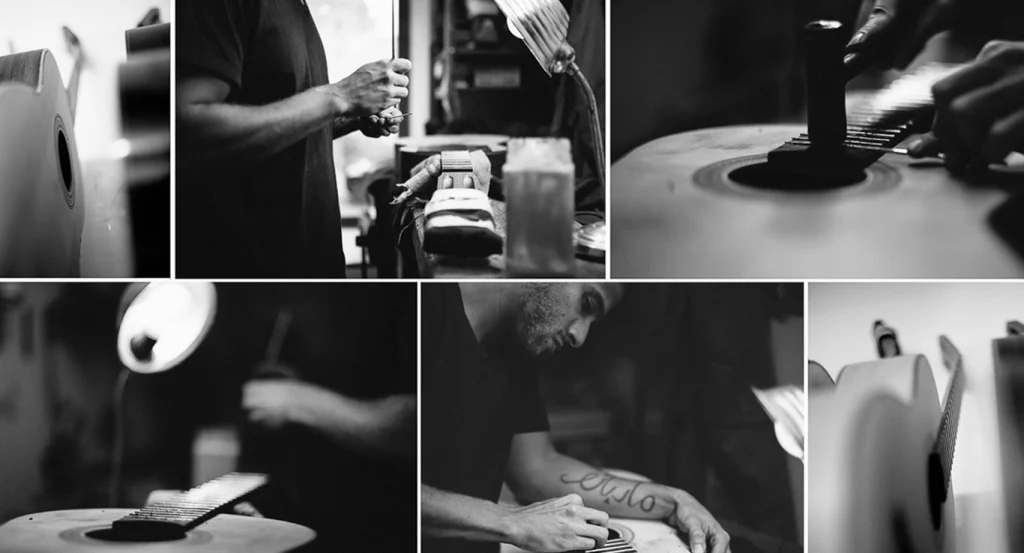

Contact
C. de la Amnistía, 1, 28013 Madrid
Monday – Friday: 9 am – 2 pm, 5 pm – 7 pm
Saturday: 10 am – 14 pm
915 218 155
Info@marianoconde.com
© 2024 Guitarreria Mariano Conde